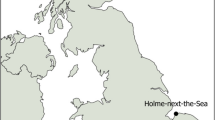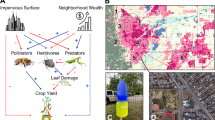Summary
In northern Australia, compass termites build tall wedge-shaped mounds with an elongated axis that has a striking north-south orientation. Various hypotheses have been advanced to account for this remarkable mound architecture. However, behavioural aspects of mound orientation have rarely been investigated. The currently accepted hypothesis considers mound orientation as an adaptation to local long-term environmental conditions to maintain a temperature plateau at the eastern face of the mound. According to this hypothesis termites should concentrate at the eastern face when ambient temperature conditions are not ideal. This was tested in the current study by applying a new, non-destructive technique that allows monitoring of termites through solid material. Termatrac®, a tool developed for termite pest detection, uses microwaves to detect the movement of termites. As predicted by the eastern- face-plateau hypothesis, termites concentrated in the morning at the eastern face of the mound. However, this pattern was not found at sunrise or noon despite a similar temperature gradient between eastern and western face. This might indicate that only the morning heating of the eastern face is important for the termites, while it plays no prominent role during the rest of the day. The eastern-face-plateau hypothesis is then compared with other hypotheses to develop a general framework that addresses the different characteristics of compass mound architecture: shape, orientation and geographic variation in orientation.
Similar content being viewed by others
Author information
Authors and Affiliations
Corresponding author
Additional information
Received 1 November 2002; revised 28 January 2003; accepted 12 February 2003.
Rights and permissions
About this article
Cite this article
Korb, J. The shape of compass termite mounds and its biological significance. Insect. soc. 50, 218–221 (2003). https://doi.org/10.1007/s00040-003-0668-2
Received:
Revised:
Accepted:
Published:
Issue Date:
DOI: https://doi.org/10.1007/s00040-003-0668-2




